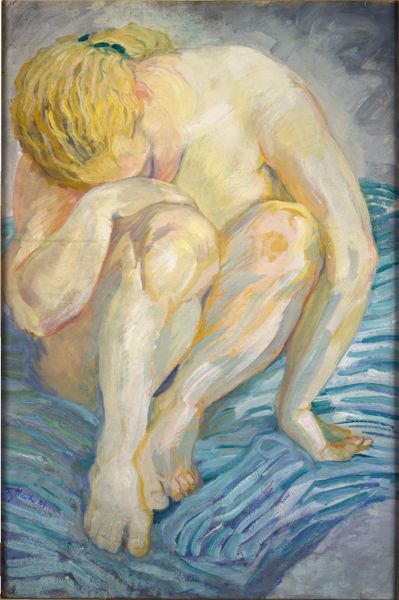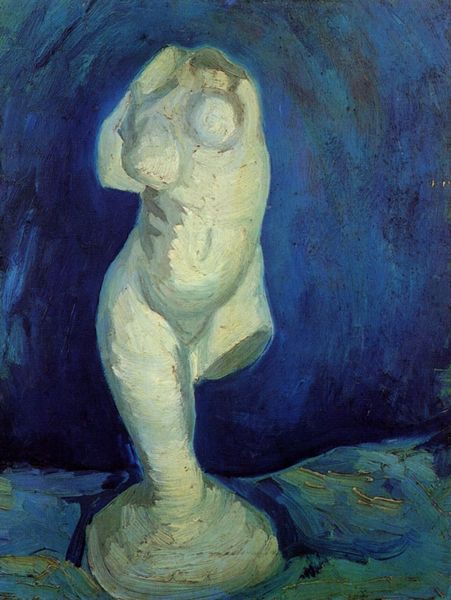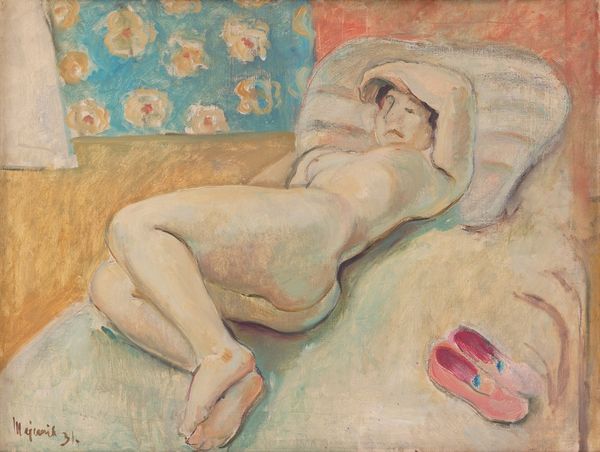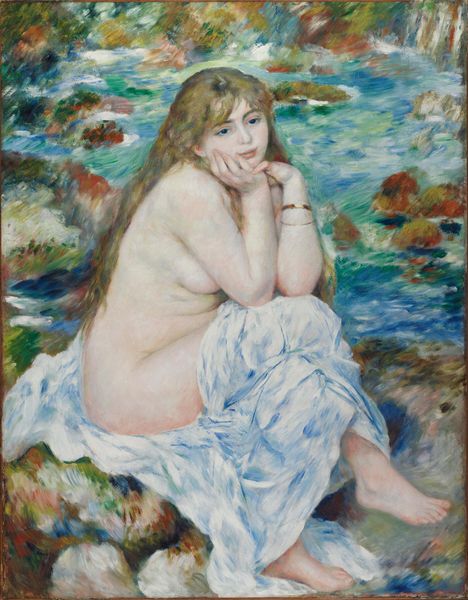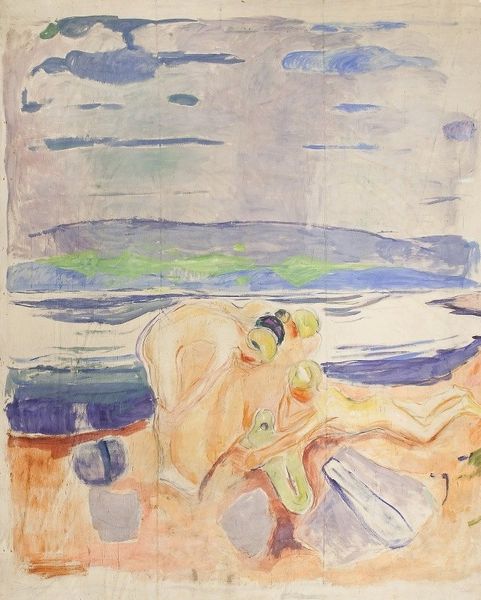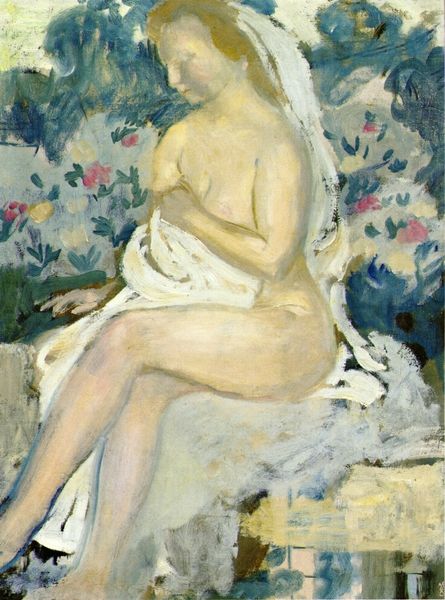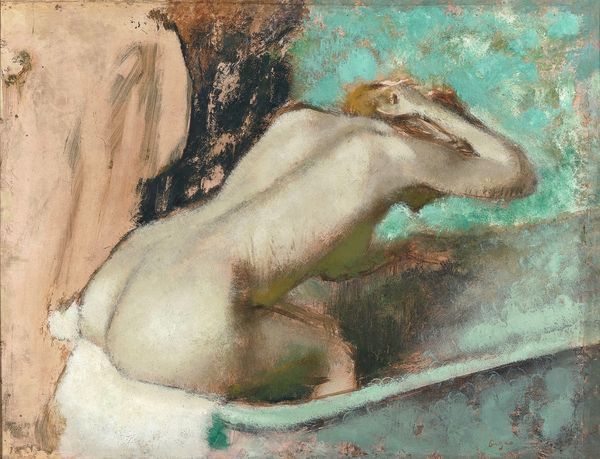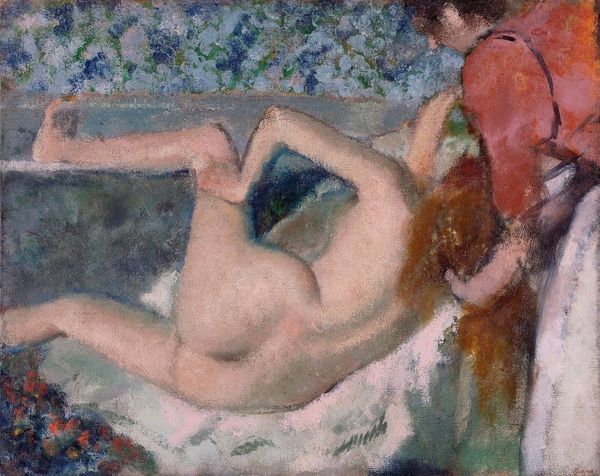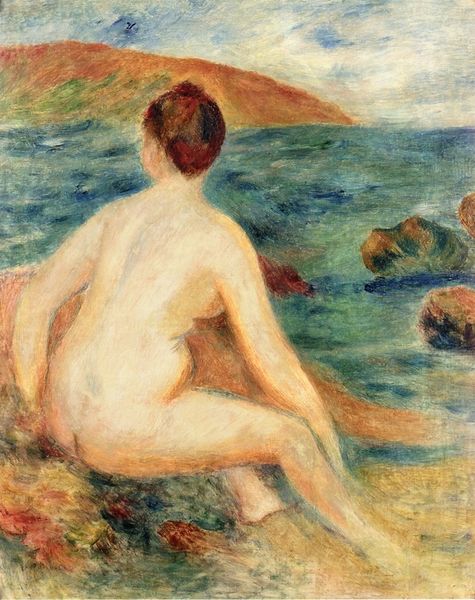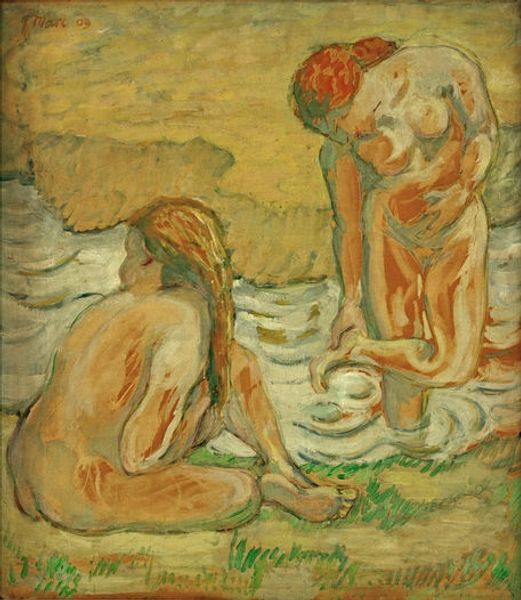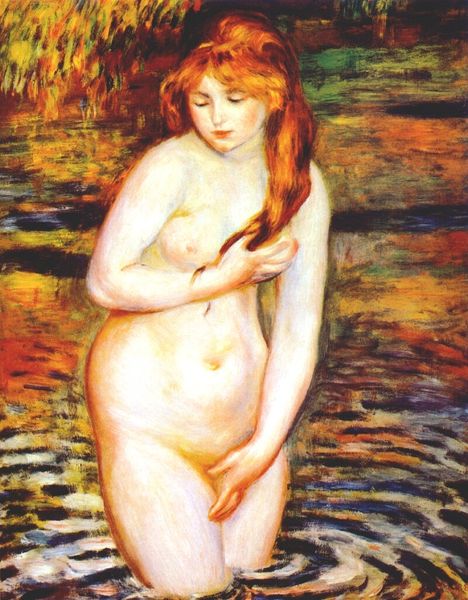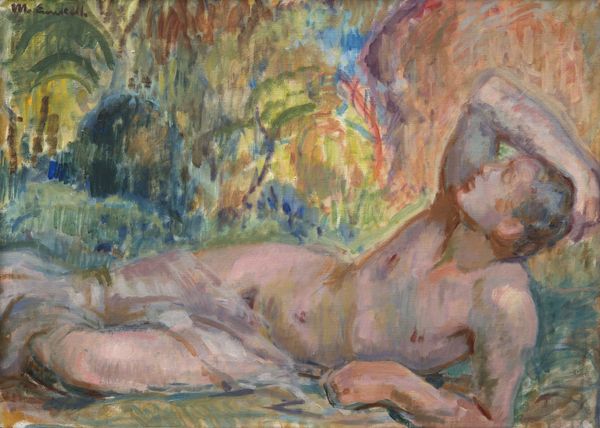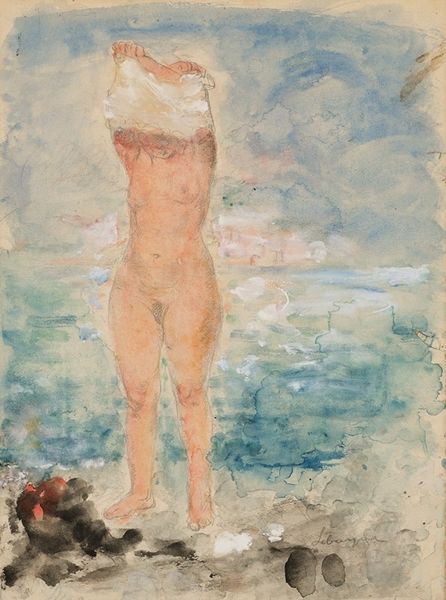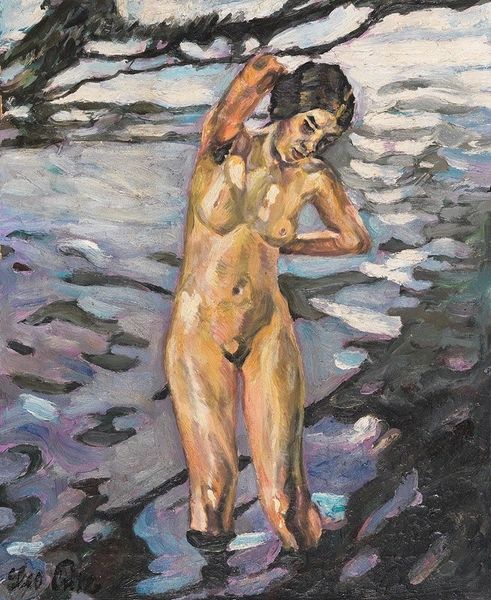
Copyright: Public domain
Curator: Henri Manguin painted "La Baigneuse" in 1906 using oil paint and an impasto technique. It offers a compelling glimpse into his post-impressionist style. What strikes you first? Editor: Immediately, it's the texture. The thickly applied paint creates this tangible sense of light shimmering across the water. But I also note that the woman isn't idealized; there’s an earthiness, an embrace of the real female form. Curator: Manguin's contemporaries and his association with Fauvism really influenced that handling of paint, a break from more academic approaches. He’s not aiming for photorealism, but rather capturing a feeling, an impression of the scene. We have to look at the legacy of post-impressionists, who favored a clear imprint of an individual experience, instead of merely objective, realist depiction. Editor: Absolutely, and you can see that manifest through his unusual treatment of the female nude. Too often in art history, the female nude becomes an object of passive, male gaze. Yet, here, there’s a certain defiance in the portrayal—a subject existing within the space on her own terms, the quiet repose with the gaze looking downward. Curator: The social context here also must be carefully observed. Manguin lived in a time where the perception and treatment of the female body were greatly influenced by burgeoning modernist ideals. As well as production – Manguin worked in a unique relationship with his canvas: he placed it on the floor while he painted, sometimes with a large palette – to him, that enhanced the experience and immediacy of making the work. Editor: And let’s not ignore that setting! The backdrop infuses a sense of placid leisure: it represents escape to the south. Curator: A great point, it brings everything together so succinctly. He clearly wanted us to consider not only form and the methods of production, but also the place this artwork occupies in a wider social narrative, one concerning sensuality and the relationship between figures and their landscapes. Editor: For me, looking at this piece now, I understand the beauty within it – particularly in the ability to allow a female figure, rather than simply reflecting expectations about them, and to show, perhaps, just the moment when she lets down her guard.
Comments
No comments
Be the first to comment and join the conversation on the ultimate creative platform.
